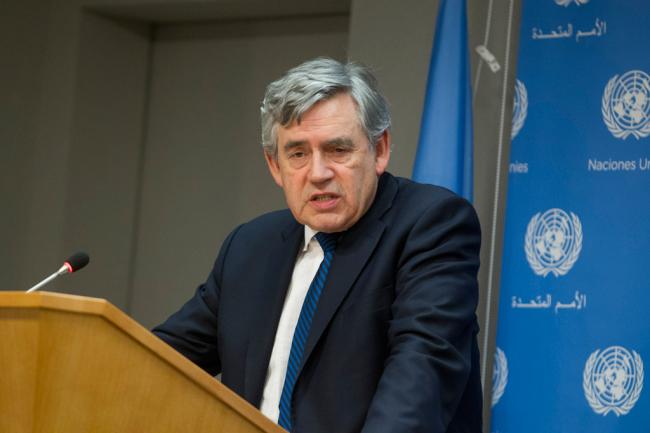“This is not the year of the child but the year of fear, with 2015 already the worst year since 1945 for children being displaced, the worst year for children becoming refugees, the worst year for children seeing their schools attacked,” said Gordon Brown, the UN Special Envoy for Global Education, “with rising numbers of girls and boys at risk from conflict in Syria, Turkey, Lebanon, Jordan, Iraq, Burundi, South Soudan, northern Nigerian and from natural disasters in Nepal.”
He outlined illustrative statistics, including the fact that over half of the world’s record 38 million internally displaced persons (IDPs) are children, and that a similar portion of the world’s 16.7 million refugees are children.
In addition, he said over 825,000 children are trafficked each year, with 8.6 million in slavery, an estimated five million girls married off before the age of 15 last year, and about 168 million child labourers, 85 million of whom were engaged in hazardous work.
“We expect the figure to rise as in crisis zone after crisis zone even school age children who were once at school are being forced into child labour,” he said.
He added, “Today in some of the world’s most troubled spots it is open season for traffickers, with girls snatched from the streets in Nepal to adolescents forced into marriage in Syria, Lebanon, Turkey and Jordan.”
Brown said children were the biggest victims of disasters, crises and conflicts and looked ahead to an upcoming visit to Jordan and Lebanon where he expected to see the worsening plight of Syrian refugees.
He also noted a litany of horrific situations faced by children in other parts of the world, including in South Sudan, where children were conscripted as soldiers, and in Nepal, where girls, already made homeless by the earthquake, found themselves at risk of traffickers.
“This week, Nepalese State radio messages are confirming what we already know,” said the envoy.
He added, “In the midst of the fall-out from the earthquake, the Government is directly warning half a million girls – now on the streets – and their parents, to beware of suspicious gangs trying to recruit them and traffic them out of the country.”
He stressed that the best answer was education, restoring hope to those in dreadful situations.
“Not only does school offer opportunity and safety,” he said.
He added, “It restores hope that as children they can plan for a better future.”
He called on aid agencies and development partners to agree to a Global Humanitarian Fund for Education in Emergencies which he said could be launched later this year at the UN General Assembly, and which was designed to remove delays and prevarication when disasters strike.
“There will be the ability to act immediately and – as we would have wanted to see in Nepal, Syria, Lebanon and Jordan – without having to wait months while we hand round a begging bowl,” he said.
He pointed to a “bold plan” proposed by the UN alongside the Lebanese Government and international partners to get 500,000 Syrian children back into school through providing double shifts at a cost of just $500 per child.
“The evidence shows that when girls are at school, child marriage and child abuse are dramatically reduced,” he said.
He added, “Sadly, only one per cent of the humanitarian budget goes to schooling.”
Photo: UN Photo/Loey Felipe
